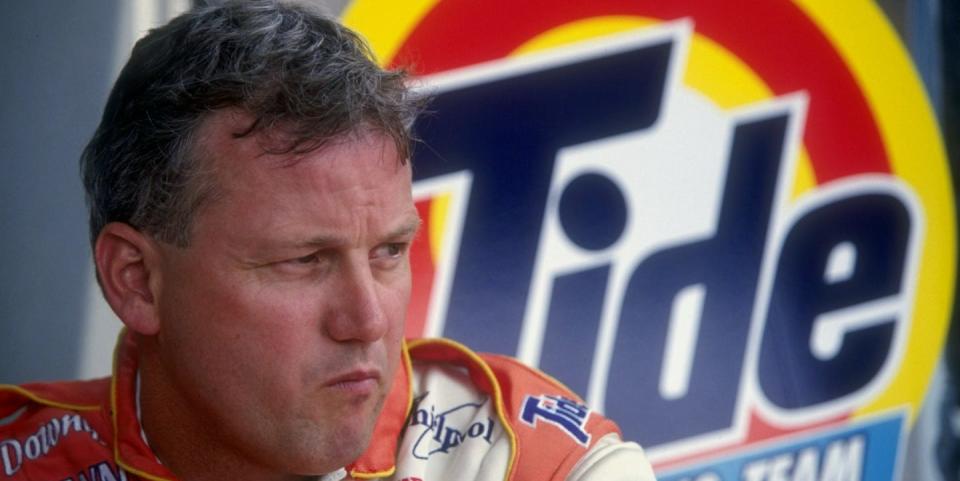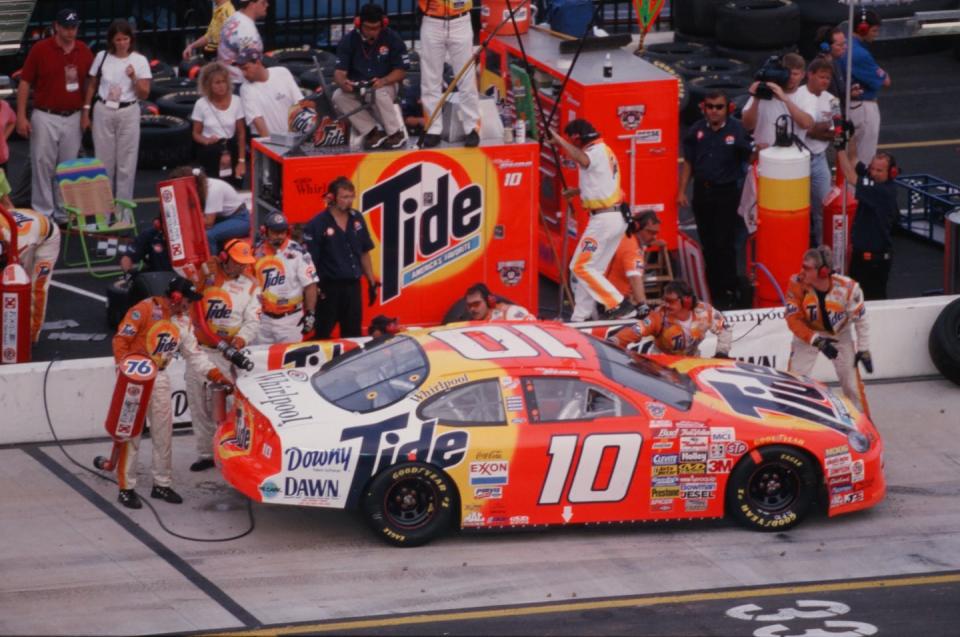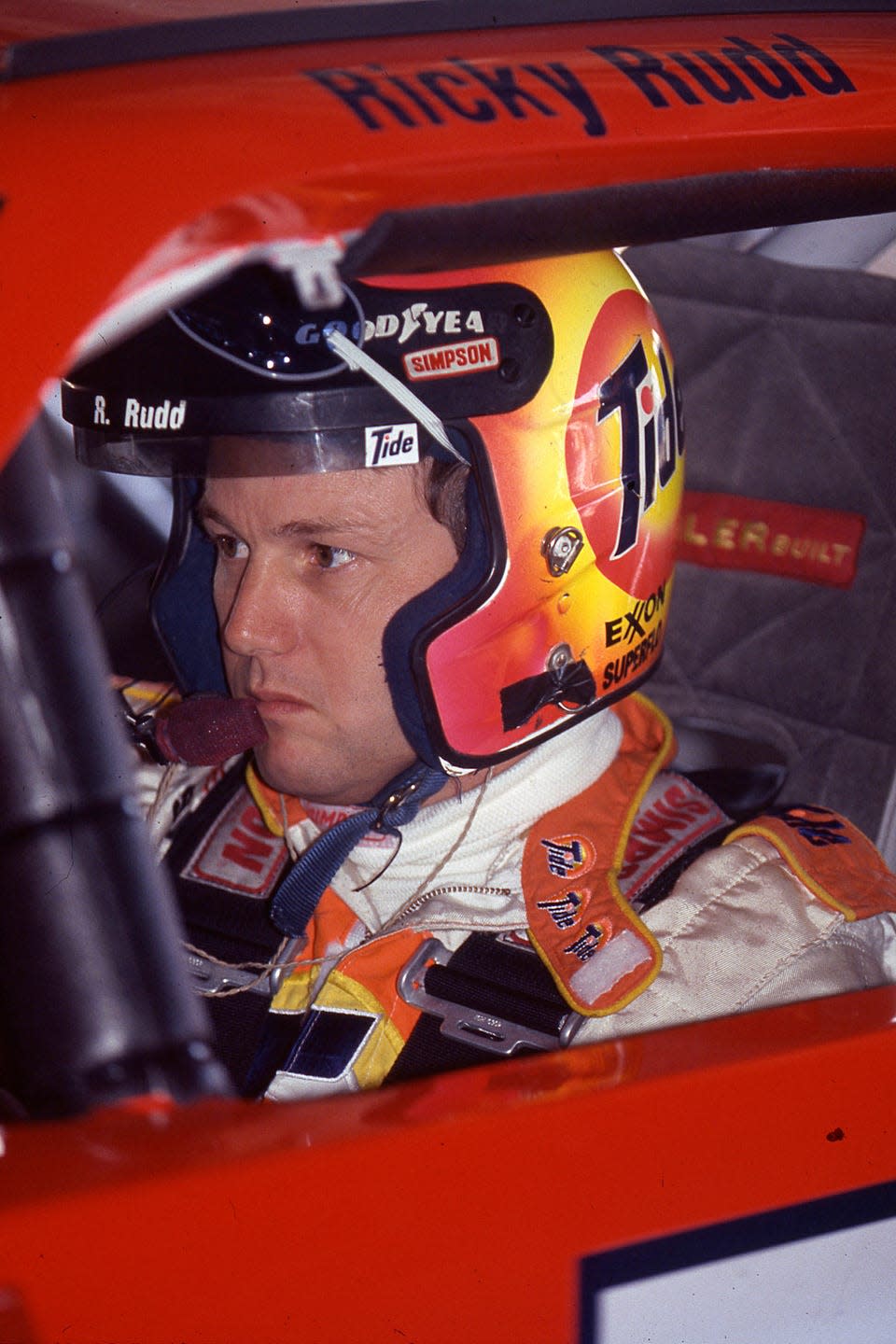Why Ricky Rudd's Hot Victory Celebration at Martinsville in '98 Was One for the Ages

Over NASCAR’s past quarter-century, few victory-lane celebrations can match the one at Martinsville Speedway Sept. 27, 1998.
And that’s a good thing.
Ricky Rudd won the NAPA 500, leading the final 96 laps and outrunning Jeff Gordon by a half-second at the finish. The overlapping story of that win is that it came on one of the most oppressive weather days in NASCAR’s modern era. Temperatures for the afternoon race reached into the mid-90s, meaning drivers in the tight confines of the race cars were wrestling with numbers closer to 140 degrees.
Although certainly uncomfortable for everyone in the field that day, the heat was generally tolerable for drivers using some form of cooling systems. Rudd’s Ford Taurus was similarly equipped, but the system failed on lap five, and Rudd knew he was in trouble with 495 painful laps to go.
As the race progressed, the pounding heat inside the car grew worse and worse, and Rudd told crew chief Bill Ingle to find a relief driver, saying he doubted he could finish the race. Hut Stricklin was summoned to the Rudd pit and, fitted with uniform and helmet, was ready to go.

In most circumstances, Rudd would have made the smart decision to pit during a caution and climb out of the car. Conditions were such that heat exhaustion was a stark reality. It didn’t help that water sprayed onto Rudd’s uniform during a pit stop burned his back.
But here was the “problem”…Rudd’s car was so good that he didn’t want to leave it. He had not won a race that season, and his streak of 15 years scoring at least one victory was in jeopardy.
The race rolled on. During pit stops, crew members put small bags of ice inside Rudd’s firesuit in an attempt to negate some of the heat.
Finally, it was over. Rudd was helped from the car in victory lane. Near collapse, he rested on the floor of victory lane and was given oxygen and IV fluids. He participated in the winner’s television interview on his back, obviously still suffering.

Rudd had second-degree burns on his back and buttocks. He recovered quickly, but it was a day he and those who helped him make it through the race will remember for years to come.
Heat inside race cars generally isn’t viewed as a major issue these days. Drivers race with so-called cool helmets and shirts and cockpit fans that make the driver’s space livable, but the matter became something of a topic during development of the Next Gen car when early tests showed that the interior of the car would be toastier than the previous model. Changes, including an air duct in the windshield and slots in the back window, improved the situation.
“Still, the right circumstances and the right car can certainly bake you,” Chase Elliott said.
“The race at COTA (March 27) was pretty toasty,” Joey Logano said. “But the windshield duct helps a lot, and the slots in the back glass. Darlington can be bad, and Indy usually is brutal, but with the cool boxes and cool shirts you get used to it.”
Michael McDowell said teams have been fortunate that race-day temperatures generally have been moderate so far this season, but he’s already targeting summer races at Daytona Beach and Atlanta as days that might prove testy—and toasty. They’re not likely to be worse than what McDowell called his worst “heat” race—August 2008 at Pocono Raceway.
“It probably was only 85 degrees,” he said, “but there had been a break for rain and after that humidity was super high. Everything was sealed off in the Car of Tomorrow, and it was hot. I was a rookie, too, and wasn’t used to 500-mile races. I’m like, ‘I don’t know how these guys do it.’ It was a mental challenge, for sure.”
Over the years, some of the most punishing races from a heat standpoint have been recorded at Dover Motor Speedway, where brutal 500-mile races routinely stretched beyond four hours. Sometimes far beyond four hours.
“The races at Dover in the ’70s could be five hours,” former crew chief Buddy Parrott said. “They had one bathroom in the garage area. It was so small you could barely get in there, and a few minutes after the race drivers were already in there in the showers. They were actually laying on the floor, with their uniforms half off or naked. Some of them couldn’t hold their arms up to take a shower. I told somebody, when you’ve got Cale Yarborough laying on the floor and he can’t get up, that’s a tough-ass race track.”
Fighting the cockpit heat resulted in a number of experiments over the years.
“Drivers put insulated heels on their shoes,” Parrott said. “You often heard it said that the floorboards got so hot you could boil water on them. Bobby Isaac was our driver when I worked with Harry Hyde, and I remember him getting out of a car looking like a pickled beet. I got some fiber board and used a knife and a razor blade and cut it to fit all around the floorboard. I pieced it together like a puzzle. Bobby was amazed by it, but it eventually didn’t work because of the possibility of fire.
“When the cool suits came along, they worked pretty well but some drivers wouldn’t use them because if they failed during a race it was double-trouble.”
Before technical advances lessened the heat factor in the driver area, some drivers simply accepted the fact that race day would be brutally hot and tried to prepare for it by putting their bodies through a weird sort of preparation. Some would drive from the Charlotte area to a race in Darlington, for example, with all windows up and the car heat setting turned to the max, creating an environment similar to race-day conditions.
Call it sweat equity.
Check out the race below. At the very least, fast forward to the 3:40:30 mark of the video to see Rudd's unusual post-win press conference.

 Yahoo Autos
Yahoo Autos 